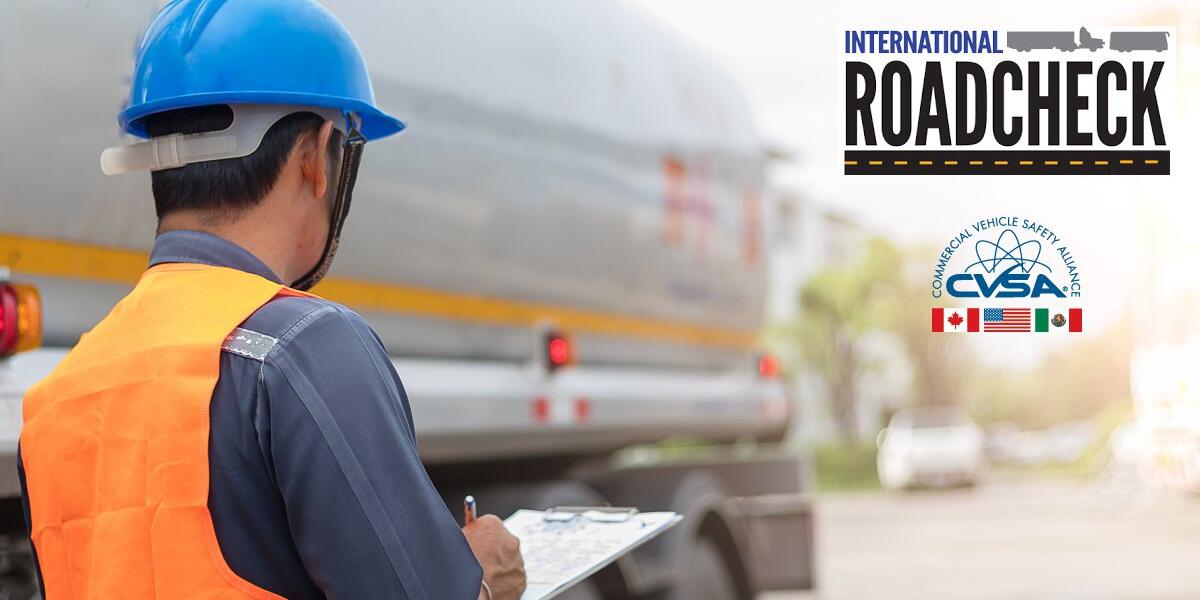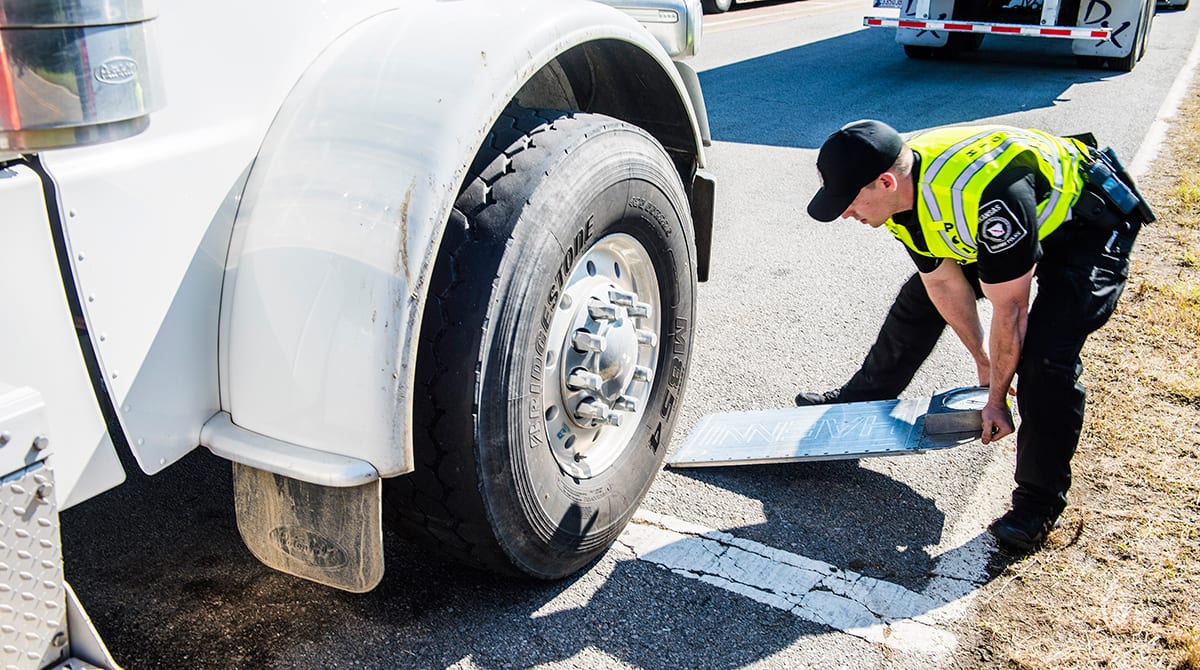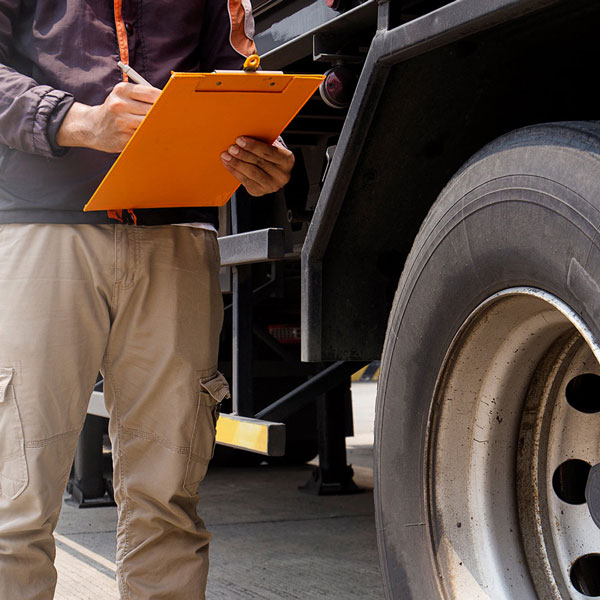The Commercial Vehicle Safety Alliance’s (CVSA) International Roadcheck is scheduled for next week, May 13–15. This high-visibility, high-volume commercial motor vehicle inspection and regulatory compliance enforcement initiative takes place over three days in Canada, Mexico, and the United States.
CVSA-certified law enforcement personnel will inspect commercial motor vehicles and drivers at weigh/inspection stations, temporary sites, and via mobile patrols to verify compliance with federal, state, provincial, or territorial regulations. Data from the 72-hour International
Roadcheck will be collected, and the results will be released this summer.
Each year, International Roadcheck places special emphasis on a specific category of violations. This year, the 2025 focus areas are tires and false records of duty status.
During the tire inspection, inspectors will look for:
-
Low tread depth
-
Audible air leaks
-
Flat tires
-
Exposed belt material or casing ply in the tread or sidewall
-
Tread or sidewall separation
-
Bulges in the sidewall
-
Improper repairs, such as rubber-coated plugs in the sidewall
-
Items lodged between dual tires
While checking a driver’s records of duty status (RODS) for hours-of-service compliance, inspectors will also look for:
-
Electronic logging device (ELD) tampering, including driving while not logged in, disconnected devices, or improper edits
-
Ghost drivers (claiming a co-driver when none is present)
-
Improper use of the personal conveyance special driving category
-
Misuse of other exceptions, such as adverse driving conditions
-
Recording off-duty time while performing work for a motor carrier or non-motor carrier
Over the three days, inspectors will conduct the routine North American Standard Level I Inspection—a thorough 37-step procedure that includes an examination of both vehicle components and driver documentation and requirements.
Question of the Week
Question: My driver has gone through a roadside inspection. How long do I have to keep this
documentation on file?
Answer: Copies of all roadside inspections must be kept by the motor carrier for 12 months. The driver is required to submit the inspection report to the motor carrier within 24 hours. If the driver is not returning to the terminal, the inspection must be mailed in.
If the inspection resulted in any violations, they must be corrected or repaired, and the inspection form must be signed and certified to confirm that the repairs were completed. This signed form must then be sent back to the state where the inspection occurred within 15 days.
Best Practice Guidelines for Roadside Inspections:
-
Train drivers on how to perform thorough, high-quality pre-trip inspections to reduce the risk of violations.
-
Review your CSA score monthly at www.ai.fmcsa.dot.gov by entering your DOT number or company name.
-
Review the vehicle and driver BASICs, and cross-reference the inspections you have on
file with those submitted by your drivers. Follow up with any drivers who have not turned in inspection reports.
-
Use the “Carrier History” tab in the Tools/Resources section on your CSA home page to track whether your number of inspections is increasing or decreasing.
-
Review inspection reports and any violations with your maintenance provider to identify and correct recurring issues.
-
Keep copies of all inspection reports in both tractor and trailer files, along with any related repair orders if violations occurred.
-
Cross-reference roadside inspection details—such as date, time, and location—with drivers’ hours-of-service documentation to identify possible falsification violations.
-
Train drivers on how to properly handle a roadside inspection and how to conduct themselves professionally during the process.
-
Keep vehicles clean and well-maintained to avoid being targeted for inspections.
-
Remind drivers that moving violations often trigger inspections.
-
Consider implementing a driver incentive program for successfully passing roadside inspections.
What documentation is required to be kept in vehicles leased or rented from Idealease to show they are not owned by the carrier?
Answer: If the vehicle is subject to Federal Motor Carrier Safety Administration (FMCSA) regulations—meaning it has a Gross Vehicle Weight Rating (GVWR) over 10,000 lbs—then specific documentation is required to be kept in the vehicle for the duration of the lease or rental period.
-
Leased vehicles must comply with FMCSA regulation CFR 376.11(c), which states that a copy of the lease agreement or a certified statement of the lease containing the required information must be kept in the vehicle throughout the lease term.
-
Rented vehicles must comply with FMCSA regulation CFR 390.21(e)(2)(iv), which requires a copy of the rental agreement to be carried in the vehicle for the duration of the rental period.
This documentation ensures the vehicle is properly identified as leased or rented and is operating in compliance with federal regulations.










